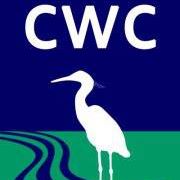The first three years of Coastal Waters Consortium (CWC) began September 2011 and continues through its current no cost extension until the end of December 2015. The second three years of CWC-II began January 1, 2015 and extends until the end of December 2017. The research foci and the members of CWC evolved between CWC-I and CWC-II—some were discontinued, some were continued, and some were added. Where differentiation is needed, the most current information is listed first in the various sections of the web site, followed by CWC-I.
Coastal Waters Consortium -– III
CWC-III will build upon the previous Coastal Waters Consortium (CWC) grants with this final two-year grant. We are 24 co-Principal Investigators and 3 collaborators from 14 institutions. The following broad goals will be achieved in the next two years as we conclude the momentum started in the CWC-I and -II GoMRI-funded projects:
1) Finalize oil transport and fate models, assess their predictive skill, and provide model support for other CWC researchers;
2) Track the chemical evolution and biological degradation of the petroleum/dispersant components in marsh and mesocosms;
3) Finalize a seven-year baseline of oil contamination at the key sampling sites, and measure shoreline erosion, vegetation, and soil characteristics;
4) Conclude mesocosm experiments of oiling on multiple ecosystem components, including oil degradation, soil characteristics, vegetation, microbes, organisms, predator-prey responses, and biogeochemistry;
5) Complete a field and modeling study of the fluxes of water, sediment, nutrients, carbon and oil through Barataria Pass over an annual cycle and use it to evaluate the predictive skill of CWC models;
6) Conclude individual and population food webs models using a variety of isotopic, compound specific, and fatty acid tracers for birds and marsh rats, and overall food webs;
7) Focus specific sub-model attention on the effect of freshwater diversions on fish food webs;
8) Synthesize data, tools and perspectives through workshops that transcend individual component groups to include other researchers (phytoplankton, modeling, nutrients and oil, carbon flux, and organismal responses); and
9) Prepare additional outreach activities, including a web-based interactive teaching/research project on a 2-dimensional Predictor Project, and a specific activity for transfer of research knowledge to practitioners.

